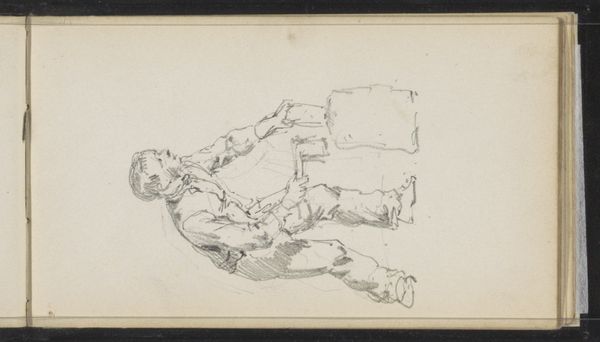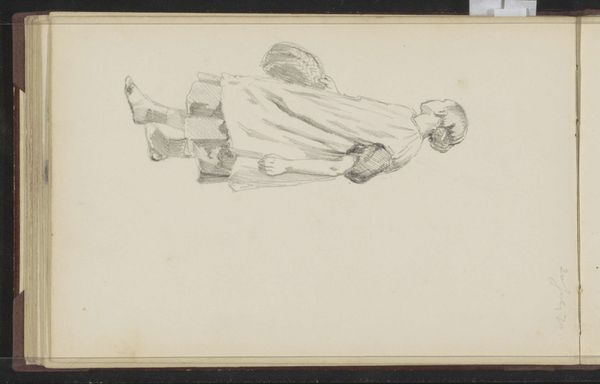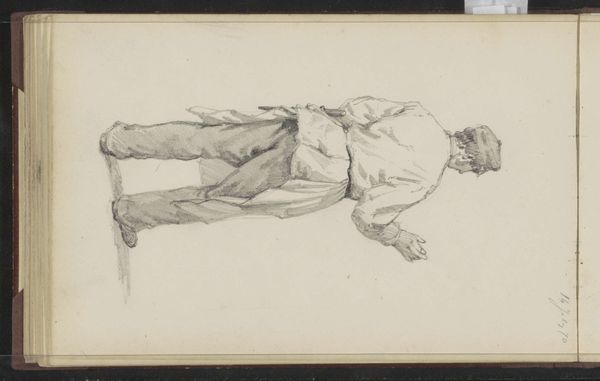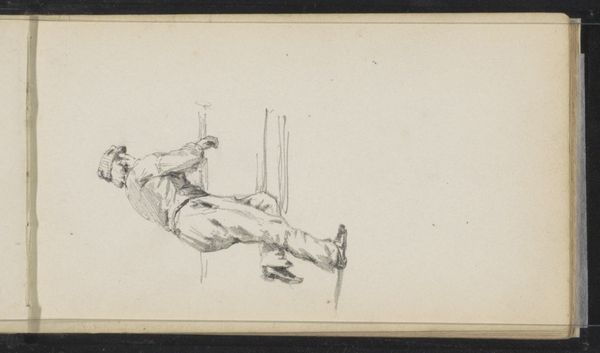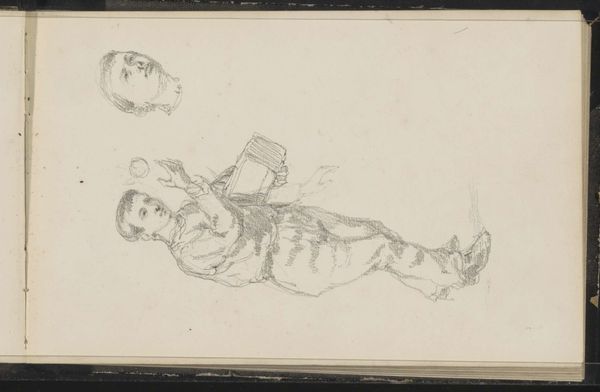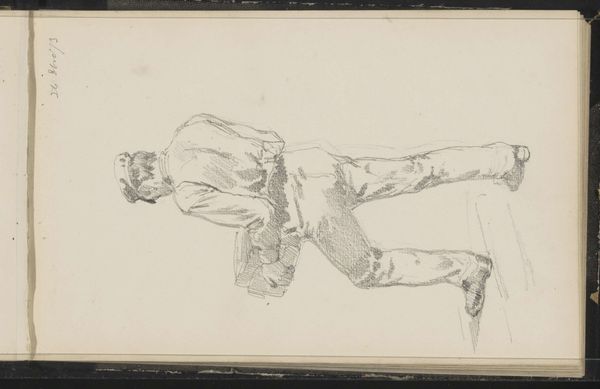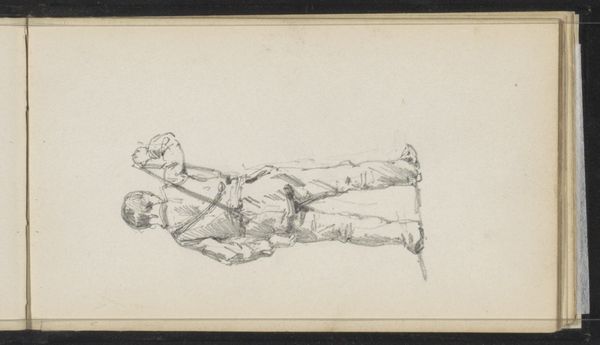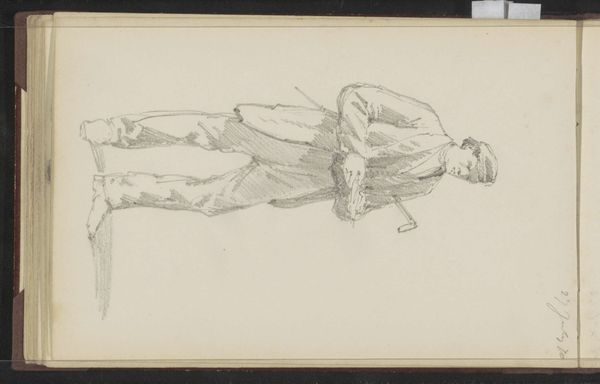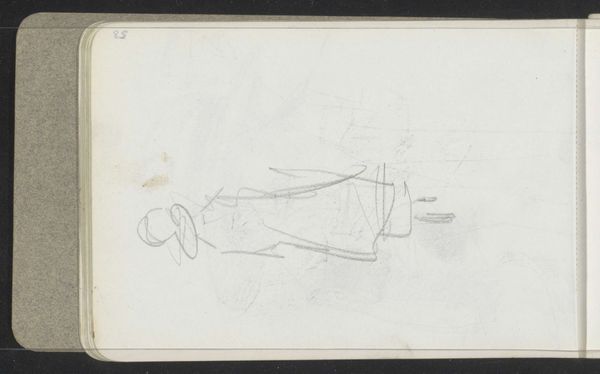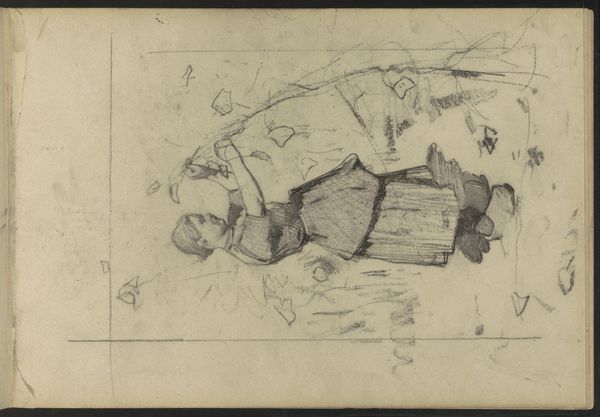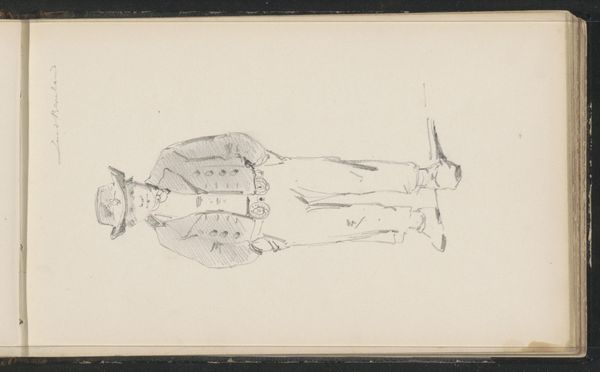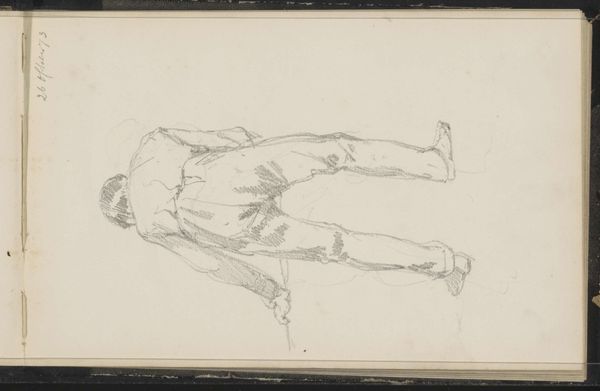
drawing, pencil
#
portrait
#
drawing
#
light pencil work
#
quirky sketch
#
sketch book
#
incomplete sketchy
#
figuration
#
personal sketchbook
#
ink drawing experimentation
#
pen-ink sketch
#
pencil
#
sketchbook drawing
#
watercolour illustration
#
academic-art
#
sketchbook art
Copyright: Rijks Museum: Open Domain
Editor: Here we have Cornelis Springer's "Architectuurstudie en een jongen," a pencil drawing from around 1863. It’s quite simple, really, a quick sketch. What strikes me is the contrast between the detailed architectural element and the more loosely rendered figure of the boy. How do you interpret this work? Curator: This drawing invites us to consider the relationship between architectural representation and lived experience in the 19th century. Think about the power structures embedded within the architectural designs themselves. Who benefits from the grand facade depicted? And what does the presence of the boy, seemingly disconnected from it, suggest about access and social mobility at the time? Editor: That’s fascinating. I hadn’t considered the social implications of the architecture itself. The boy just seemed like a random element. Curator: Consider it more closely. Is he meant to inherit or benefit from such opulence? Or is he simply passing by, an observer, perhaps excluded from the world that architecture represents? Does his informal pose contrast deliberately with the rigidity of the architecture? What do you think the artist wanted to convey by juxtaposing those elements? Editor: I suppose his presence raises questions about who is included and excluded by design, quite literally. It's less a study and more of a silent commentary on the society of the time. Curator: Precisely. By drawing attention to the marginalized figure alongside the prominent architecture, Springer prompts us to think critically about the societal implications of urban development and the unequal distribution of space and privilege. Editor: This has really broadened my understanding. I went from seeing a simple sketch to recognising a complex social commentary! Curator: And that is why situating the artwork in its broader cultural context reveals rich layers of meaning and relevance for us today.
Comments
No comments
Be the first to comment and join the conversation on the ultimate creative platform.
